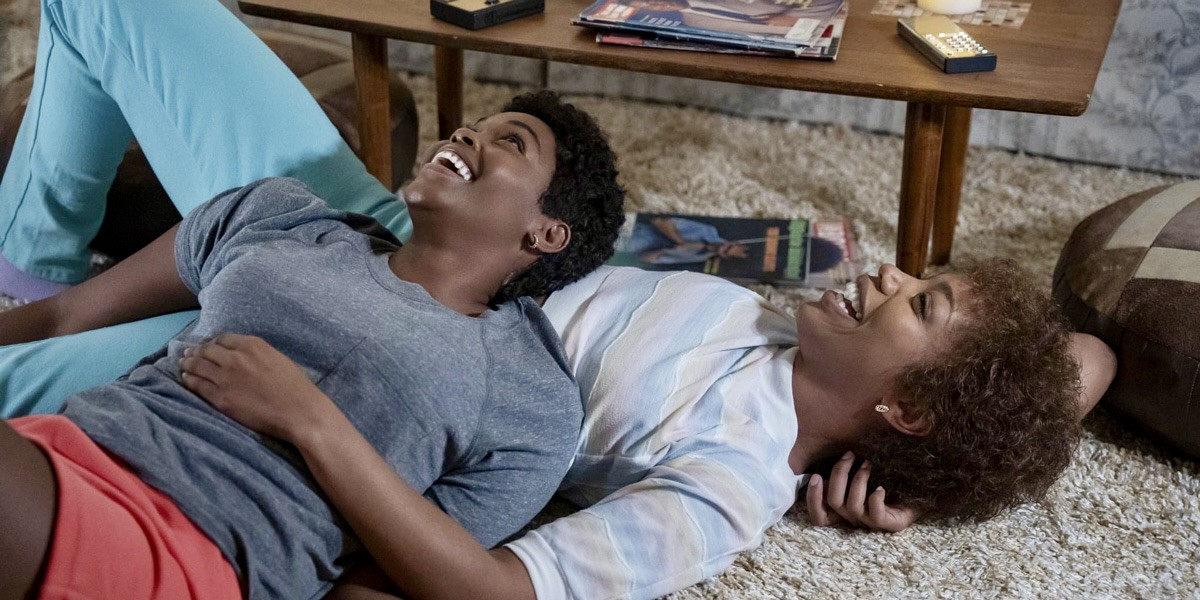Kasi Lemmons’s I Wanna Dance With Somebody arrived as the first cinematic biography aiming to capture the essence of Whitney Houston’s extraordinary life. With a promising cast, seasoned producers including Pat Houston and Clive Davis, expectations were high for this deep dive into a legendary career. Biopics hold a unique power to immerse audiences in the life of their subject, offering a sense of intimate experience alongside the protagonist. However, this highly anticipated film, while featuring a committed central performance, ultimately falls short of truly illuminating the icon it portrays.
Naomi Ackie delivers a compelling physical performance, channeling Houston’s electrifying stage presence. While some may find Ackie’s resemblance to Houston debatable, her embodiment of the singer’s dynamism is undeniable. Yet, despite Ackie’s efforts, the film struggles to transcend a superficial retelling of well-known biographical points. Instead of using the biopic format to explore the depths of Houston’s emotional landscape, her personal trials, and the nuances of her relationships through insightful dialogue and nuanced acting, the movie often feels like a cursory walkthrough of her Wikipedia page. While I Wanna Dance With Somebody movie attempts to touch upon less publicized facets of Whitney’s life, it unfortunately skims the surface, lacking the profound exploration her story deserves.
One of the film’s most talked-about aspects is its portrayal of Houston’s relationship with Robyn Crawford. Their bond, a subject of intense speculation and controversy during Houston’s lifetime, is presented swiftly in the movie’s opening act. Within the first twenty minutes, Whitney and Robyn are established as deeply connected. However, the film fails to illustrate the organic development of this intimacy. We see them meet, exchange a few lighthearted jokes, and Whitney declares her ambition to sing, primarily citing her famous relatives like Cissy Houston and Dionne Warwick as her motivation, rather than any deeper personal drive. They quickly move in together, and the profound nature of their connection remains largely unexamined, leaving the audience to fill in the blanks.
 Naomi Ackie as Whitney Houston and an actress portraying Robyn Crawford share a close moment in I Wanna Dance With Somebody movie, highlighting the film's attempt to depict their relationship.
Naomi Ackie as Whitney Houston and an actress portraying Robyn Crawford share a close moment in I Wanna Dance With Somebody movie, highlighting the film's attempt to depict their relationship.
The frustrating aspect of I Wanna Dance With Somebody movie‘s approach to the Whitney-Robyn dynamic is its reluctance to delve beyond these initial scenes. Moments between Whitney and Robyn are scattered throughout the film – glimpses of Robyn supporting Whitney from afar during televised performances, acting as a creative confidante, and urging her to leave Bobby Brown. Yet, these are fleeting instances that fail to capture the documented emotional and romantic depth of their relationship, as Crawford herself has openly discussed. The movie avoids any explicit discussion of sexuality until a brief, uncomfortable scene where Whitney’s father pressures her to be seen with men for career optics. While this event is rooted in reality, the film glosses over the ongoing internal conflict both Crawford and Houston faced concerning sexuality and societal pressures, a central theme in their lives.
The narrative shortcomings evident in the film’s beginning only amplify as it progresses. The pacing is rushed and disjointed, jumping between brief dialogue snippets and lavish musical numbers. Explanations for pivotal life decisions are shallow and underdeveloped. For instance, Whitney’s foray into acting and producing is reduced to a scene where she bursts into Clive Davis’s office, declaring her desire to be in movies, devoid of any insight into her motivations or the process behind this transition. Instead, we get a passing mention of Cinderella and an abrupt scene change to The Bodyguard set. Similarly, the complex relationship between Whitney and Bobby Brown is simplified to a brief exchange of phone numbers followed by an immediate portrayal of them as a couple, skipping over the crucial development of their entanglement.
The film’s portrayal of Whitney’s battle with drug addiction is equally superficial. I Wanna Dance With Somebody movie provides no context or exploration of the origins of her substance abuse. We are presented with a few scenes of Houston using marijuana and cocaine, devoid of any deeper examination of her struggles. Houston’s character never vocalizes her internal experience with addiction. Instead, the severity of her drug use is revealed secondhand through other characters, notably Clive Davis, who mentions her “challenges” with drugs well into the film’s runtime.
Ultimately, I Wanna Dance With Somebody movie is a disappointing biopic. It missed a valuable opportunity to truly humanize Whitney Houston for a new generation. It could have offered an intimate, accessible, and engaging portrayal of her joys and sorrows as a global icon. Instead, viewers are left with a film that offers a level of dialogue, explanation, and emotional depth that fails to match the complex questions surrounding Whitney Houston – as a superstar, a vocal powerhouse, a Black woman navigating racism and homophobia, and most importantly, as a multifaceted human being.

